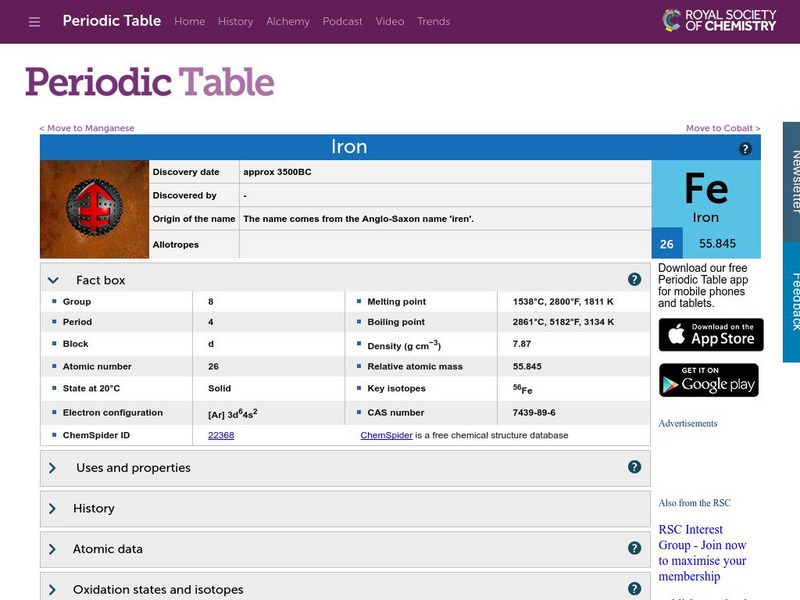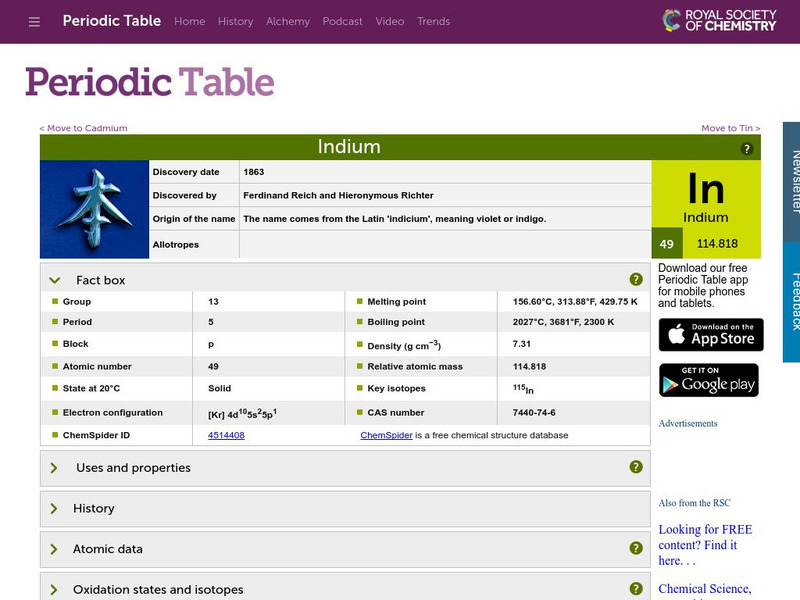Hi, what do you want to do?
Concord Consortium
Concord Consortium: How Does an Object Become Charged?
Activity 1 in this module: What is the effect of changing the composition of an atom? Since all atoms contain protons, neutrons, and electrons, what makes one element different from another is examined.
Concord Consortium
Concord Consortium: How Does an Object Become Charged?
This module develops atomic-level causal models to explain observations of electrostatic interactions via the following activities: Activity 1. What is the effect of changing the composition of an atom? Activity 2. How do objects become...
Khan Academy
Khan Academy: Periodic Table Questions
Practice questions pertaining to Periodic Table of elements.
Cuemath
Cuemath: Sets
A comprehensive guide for learning all about sets with definitions, solved examples, and practice questions.
CK-12 Foundation
Ck 12: Life Science: 2.1 Elements and Compounds
Learn how basic elements form molecules to support life.
CK-12 Foundation
Ck 12: Earth Science: Atoms to Molecules Study Guide
Understand the basic structure of atoms and molecules in the Earth's crust.
Utah Education Network
Uen: Radioactive Review
This activity consists of half-life problems for the young scholars to work out.
Cosmo Learning
Cosmo Learning: Chemistry 1 A: General Chemistry
A collection of video lectures from a general chemistry course taught at the University of California, Berkeley. The course covers topics like stoichiometry, acid-base and solubility equilibrium, oxidation-reduction reactions, chemical...
Chem4kids
Chem4 Kids: Chemistry in the Environment
This brief overview of the chemistry of the Earth gives students an idea of what environmental chemists might study.
University of Guelph
The Carbon Family: Electron Binding Energies
A very advanced site on the elements of the Carbon Family. This site describes the electron binding energies of each in a detailed graph.
University of Guelph
The Carbon Family: Shielding Constants
A short page dedicated to the Shielding Constants of the elements in the Carbon Family.
Royal Society of Chemistry
Chemical Society: Arsenic
Resource gives descriptive and historical information on arsenic.
Royal Society of Chemistry
Chemical Society: Antimony
Introductory level information on the origin, discovery and description of antimony.
Royal Society of Chemistry
Chemical Society: Iron
Brief information on the history, properties ands uses of iron.
Royal Society of Chemistry
Chemical Society: Iridium
A short summary of iridium's properties and main uses.
Royal Society of Chemistry
Chemical Society: Iodine
Resource provides basic informatioin on iodine and its properties.
Royal Society of Chemistry
Chemical Society: Indium
Brief information about indium, focussing on history, properties and uses.
Simon Fraser University
Chem1 Virtual Textbook: Electronegativity
Acting as a subtopic of the General Chemistry Virtual Textbook's section on Atoms and the Periodic Table, this site discusses shared chemical bonds between two elements resulting in electronegative and electropositive outcomes.
Royal Society of Chemistry
Royal Society of Chemistry: Lead
Short descrptive summary of lead and some of its uses.
Fun Brain
Fun Brain: Proton Don (Periodic Table Game)
Play by matching an element's name to its symbol or supply the missing name for an element when presented with its symbol. Includes a tutorial so that you can review the symbols for elements before you play.
Wikimedia
Wikipedia: Alloy
This site from the Encyclopedia Wikipedia provides the definition of the term, "Alloy," and then offers hyperlinks to special alloys. The information is very brief, but factual, and worth checking out on the subject.
Royal Society of Chemistry
Royal Society of Chemistry: Europium
Short summary of a description of europium, along with its uses.
Royal Society of Chemistry
Royal Society of Chemistry: Manganese
A concise page with some basic information on manganese and its applications.
Royal Society of Chemistry
Royal Society of Chemistry: Erbium
This resource presents a short description of erbium's properties and uses.





















